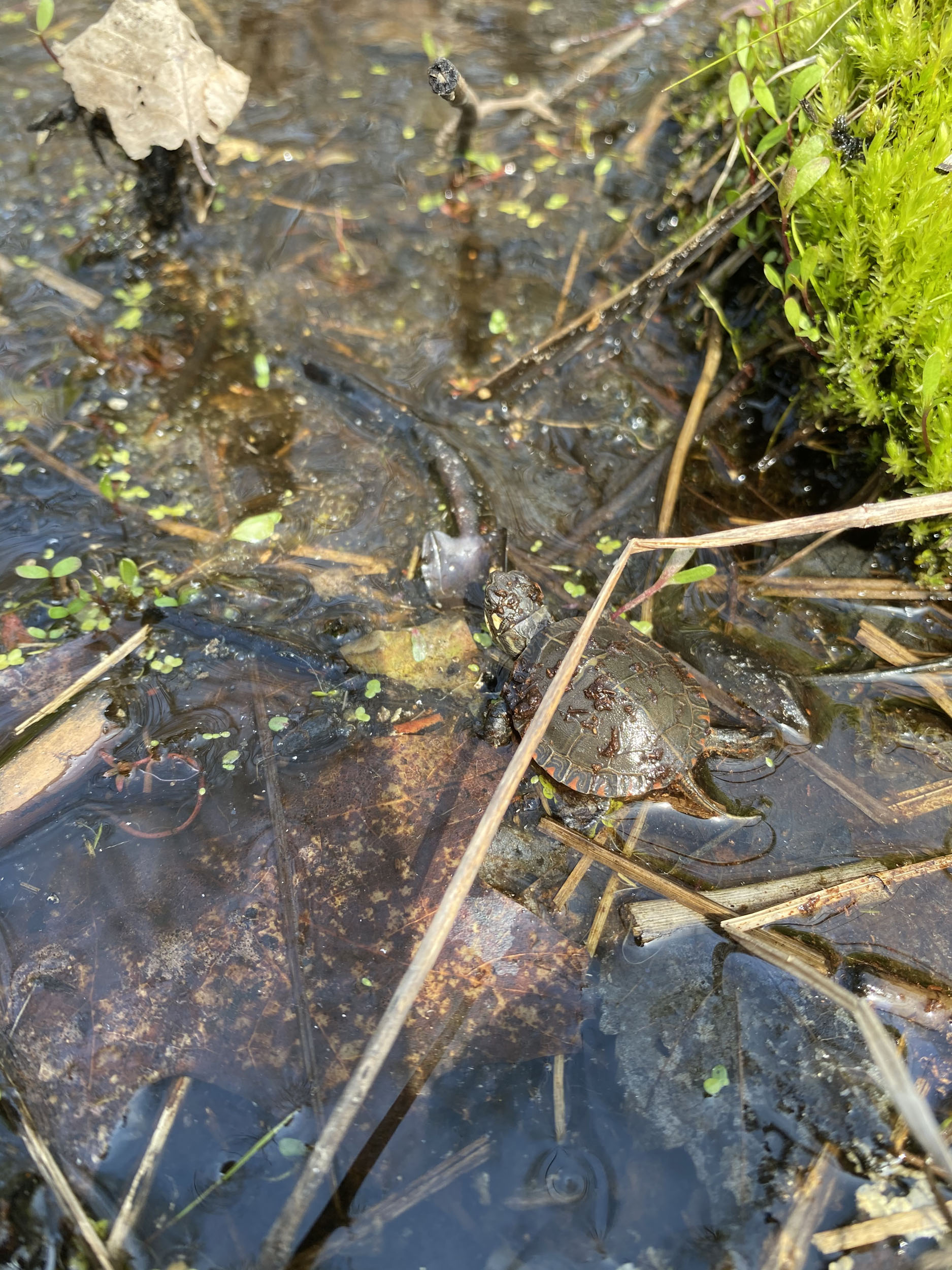The question of the week has definitely been “What do I do with the baby turtle I found?” The common answer is “Take it to the nearest water.” Unfortunately, that response is a woefully inadequate simplification—one that omits a lot of really important details that can make the difference between life and death. And with hatchling survival rates in the single digits, we can’t afford to get it wrong.
Eastern painted turtles are the most common species of hatchling found high and dry at this time of year as they emerge after overwintering in their nests. Fall-hatched common snapping turtles and diamondback terrapins also occasionally remain underground until spring. This year reports of baby snapper encounters have increased, possibly because the drought is making it tough for them to find enough water.
Helping these newly-minted beings get to where they’re going is a great way to increase their chances of survival. But each species has specific needs when it comes to safe, secure and appropriate release locations. All the following criteria need to be considered in helping a baby turtle get off to the right start:
- BABIES ARE NOT ALL THE SAME.
It is critical to identify which species of hatchling you have before you can determine where it needs to go. For help identifying hatchling species, go to www.theturtlesback.org/species/- Snapping turtles are very adaptable and tolerate almost any kind of wetland, including salt marshes.
- Painted turtles need freshwater ponds or lakes with marshy edges.
- Terrapins live in brackish water estuaries—marshes near or along the coast where the water is a combination of salt and fresh.
- BABIES ARE NOT GOOD SWIMMERS.
Believe it or not, turtles can drown! All hatchlings need shallow water—a few inches at first—with lots of things to hang onto, like emergent or aquatic plants or plant debris. Avoid steep embankments, and the water should have little to no current that could sweep them away, so no open rivers or fast-moving streams. - BABIES ARE A TASTY TREAT FOR OTHER WILDLIFE.
When you’re the size of a quarter, survival depends on having a good place to hide! Hatchlings typically bury themselves immediately into the soft bottom at the edge of the wetland, so mud, muck and algae, as well as living or dead plants and lily pads are all good…the more things to protect hatchlings from view, the better. There’s also a lot more to eat there. - BABIES NEED PERMANENT WETLANDS.
Painted and snapping turtles and diamondback terrapins are fully aquatic species. That means they need water year-round. Placing a hatchling in a seasonal wetland like a vernal pool, which dries up in the summer, would require it to move almost immediately and risk its life in the process. The shallow area you choose has to be part of a stable body of water like a pond, lake or estuary. Google maps is a good resource to use in finding a wetland; set it to satellite mode and look for pond with thick, green edges (indicating plant life) as close to where you found the turtle as possible. Bear in mind that, for snappers, this may be as much as a mile away. - BABIES NEED A COMMUNITY.
Turtles need to be part of a breeding population. Hatchlings naturally head back to the wetland where their mothers came from. While snappers are more solitary and can migrate to find mates, painted turtles and terrapins are social and do not migrate long distances. Try to place that hatchling where you know others of its kind already live—ideally the one mom came from. - BABIES DON’T NEED RESCUING.
They may seem fragile and helpless, but newly emerged baby turtles are fully equipped to survive and fully acclimated to current temperatures. Unless you’re waiting to confirm a good release location or the turtle seems sick or injured, there is no need to take that hatchling home. Don’t wait for warmer weather or for it to grow larger and stronger before releasing it. Take it to a wetland that meets all of the above criteria as soon as possible, bid it safe travels, and send it on its way.
If in doubt, never hesitate to call; we’re here to provide phone support as well as help sick and injured animals, and will gladly assist you with your foundling turtle.


